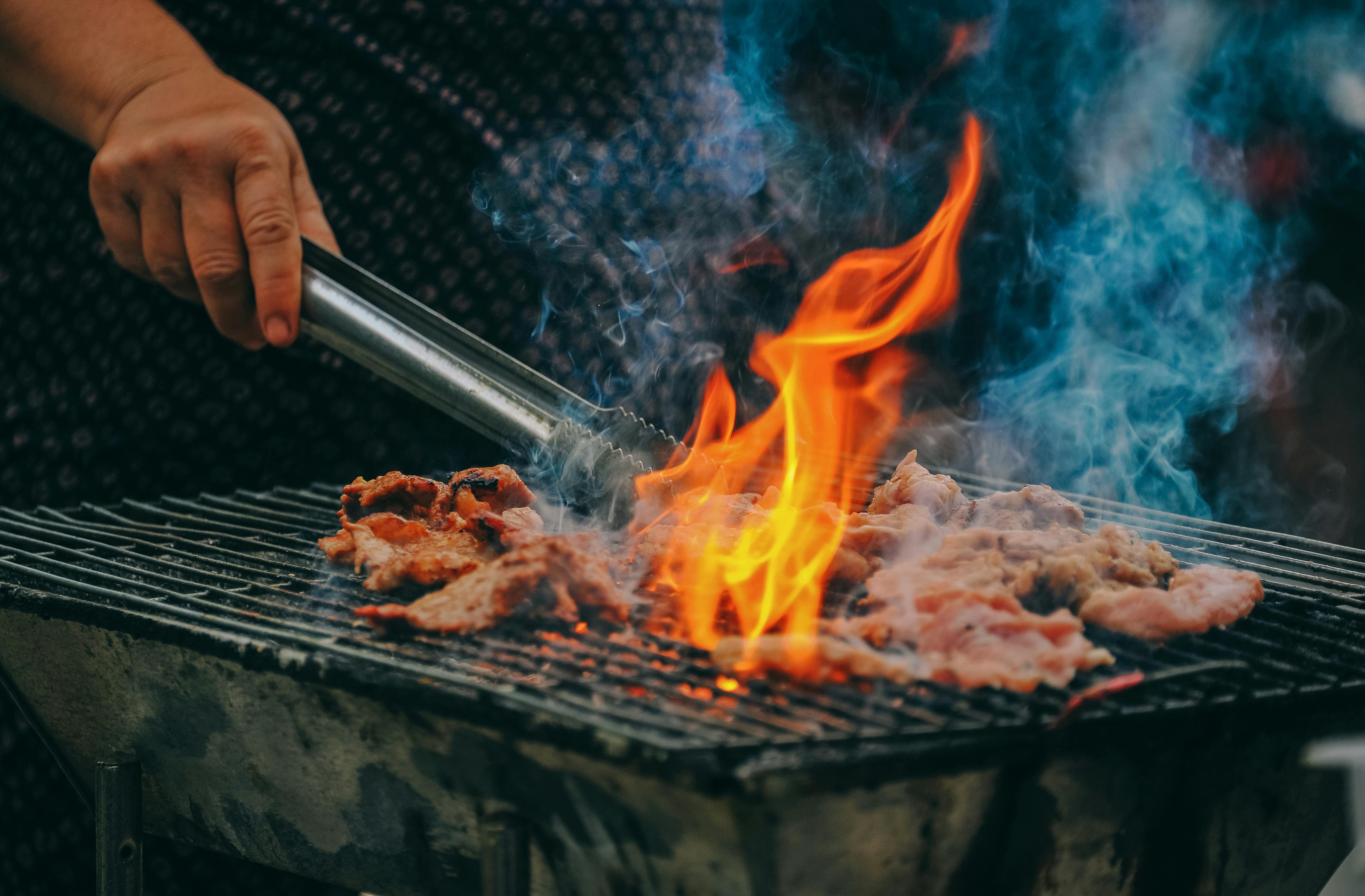From Frustration to Flavor: Mastering Non-Stick Grilling for a Stress-Free BBQ
Picture this: a picture-perfect summer evening, the aroma of grilling burgers filling the air, friends and family gathered around. Suddenly, disaster strikes! You attempt to flip your juicy masterpiece, only to have it become hopelessly stuck to the grates. The dream of a stress-free BBQ evaporates, replaced by a frantic effort to salvage your meal. Fear not, grilling enthusiasts!
- Entrefemme
- May 15, 2025
- 0 Comments
- 3238 Views
This article is your key to unlocking the secrets of non-stick grilling. We'll guide you through simple yet effective methods that transform your grilling experience from frustration to flavor. Get ready to say goodbye to stuck-on scraps and hello to perfectly seared, effortlessly released food. Let's turn your next BBQ into a stress-free celebration of deliciousness!
1. Properly Preheat Your Grill
Before placing food on the grill, ensure it's properly preheated. This allows the grill grates to reach a high temperature and creates a non-stick surface. Aim for a medium to high heat, depending on the type of food you're grilling.
Here's a recommended temperature guide for preheating your grill based on the type of food:
- Red meats (steaks, hamburgers): Preheat the grill to a temperature between 200°C and 230°C (400°F to 450°F).
- Poultry (chicken, turkey): Preheat the grill to a temperature between 175°C and 200°C (350°F to 400°F).
- Fish: Preheat the grill to a temperature between 175°C and 200°C (350°F to 400°F).
- Vegetables: Preheat the grill to a temperature between 175°C and 200°C (350°F to 400°F).
These temperatures are indicative and may vary slightly depending on your grill type and personal preferences for cooking. Monitor the heat and adjust as needed for each type of food to achieve optimal results.
2. Cleaning and Oiling the Grill Grates
Keeping clean grates is crucial to prevent food from sticking. Use a grill brush designed specifically for grilling to carefully clean the grates, removing any residue from previous grilling sessions. Ensure the brush is in good condition to avoid any risk of metal bristles contaminating your food. While most modern brushes are designed to prevent such incidents, it's always wise to exercise caution.
After cleaning, use a folded paper towel soaked in vegetable oil or a high smoke point oil such as canola or grapeseed oil to lightly oil the grates. Hold the oiled paper towel with tongs and rub it over the grates to create a thin, even coating. This helps season the grates and provides a non-stick surface for your food.
3. Oil Your Food, Not the Grates
Instead of oiling the grill grates directly, brush a light coat of oil (preferably olive oil or another high smoke point oil) onto your food before placing it on the grill. This creates a barrier between the food and the grill grates, reducing the chances of sticking.
4. Maintain the Right Temperature
Monitor the temperature throughout the grilling process. Flare-ups and sudden temperature changes can cause food to stick. If using a charcoal grill, control the heat by adjusting the air vents. On a gas grill, adjust the burner knobs to maintain a steady temperature.
5. Use the Right Tools
Invest in quality grilling tools such as a sturdy spatula and long-handled tongs. These tools make it easy to handle and flip foods without tearing or sticking. Avoid using forks or knives to flip foods, as they can pierce the food's surface and cause juices to leak, potentially leading to sticking on the grates.
6. Let Food Cook Without Moving
Once you've placed food on the grill, avoid moving it excessively. Let it cook undisturbed for a few minutes to allow for proper searing and caramelization. Moving food too soon can cause it to stick and tear on the grates.
7. Consider Using a Grill Mat
For smaller or delicate items like fish or vegetables, consider using a grill mat. These reusable mats are placed directly on the grill grates and provide a non-stick surface for cooking. They are easy to clean and prevent foods from falling through the grates.
8. Clean Grill Grates After Each Use
Regular maintenance of the grill grates is essential to prevent residue buildup and sticking over time. After cooking, while the grates are still warm, use a grill brush to remove any remaining food particles and residue. This helps keep the grates clean and ready for your next grilling session.
9. Buy a Low-Maintenance Grill
When choosing a grill, consider ones that require minimal maintenance. This can greatly simplify your grilling experience and reduce time spent on cleaning and upkeep.
Factors to consider:
- Grate material: Opt for stainless steel, porcelain-coated cast iron, or porcelain grates, which are generally easier to clean and rust-resistant compared to raw cast iron grates.
- Grill design: Choose a grill with an effective grease management system, such as a removable drip tray, to facilitate easy cleaning after each use.
- Non-stick technology: Some grills feature special non-stick surfaces that reduce the need for oiling and minimize the risk of food sticking to the grates.
- Assembly and disassembly ease: Look for grill models that are easy to assemble and disassemble for periodic cleaning.
Benefits of a low-maintenance grill:
- Time savings: Less time spent cleaning means more time enjoying grilled meals with loved ones.
- Durability: Well-maintained grills can last longer, providing better value for your investment.
- Ease of use: A low-maintenance grill can streamline your grilling sessions, allowing you to focus on cooking rather than maintenance.

 | Unlock Success with Our Guide
| Unlock Success with Our Guide



0 Comments